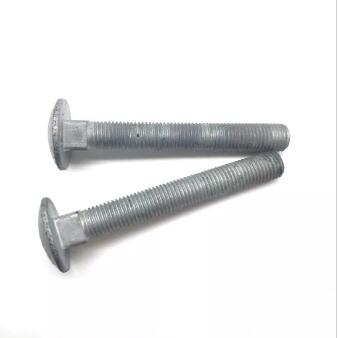Unveiling the Strength Divide: Standard Bolts vs. High-Strength Bolts
2023-11-20
Introduction
Bolts are the unsung heroes of construction and engineering, providing the critical connections that hold structures together. When it comes to selecting the right bolts for a project, understanding the key differences between standard bolts and high-strength bolts is paramount. In this blog post, we'll delve into the nuances that set these two types of fasteners apart, exploring their characteristics, applications, and the implications for various construction scenarios.
1. Material Composition: The Foundation of Strength
The primary distinction between standard bolts and high-strength bolts lies in their material composition. Standard bolts are typically made from carbon steel, which offers a good balance of strength and cost-effectiveness. On the other hand, high-strength bolts are often made from alloy steel, incorporating additional elements such as chromium, molybdenum, or vanadium to enhance their strength and toughness.
2. Tensile Strength: A Measure of Performance
Tensile strength is a crucial parameter that sets the tone for the performance of a bolt. Standard bolts, while reliable in many applications, have a lower tensile strength compared to their high-strength counterparts. High-strength bolts are engineered to withstand much higher tensile loads, making them suitable for applications where the forces at play demand a superior level of strength and resilience.
3. Grades vs. Property Classes: Markings that Matter
The classification systems for standard and high-strength bolts differ. Standard bolts are often graded, with Grade 2, Grade 5, and Grade 8 being common classifications in carbon steel bolts. High-strength bolts, especially in metric systems, are marked with property classes, such as 8.8, 10.9, or 12.9, indicating their tensile strength in mega pascals (MPa).
4. Applications: Tailoring Bolts to the Task
Standard bolts find their place in a wide range of everyday applications where moderate strength is sufficient. From assembling furniture to basic structural connections, standard bolts provide a reliable solution without unnecessary over-engineering. High-strength bolts, on the other hand, shine in scenarios where the demand for structural integrity is high, such as in the construction of bridges, high-rise buildings, and heavy machinery.
5. Installation: Torque and Tension
The installation process also sets these two types of bolts apart. High-strength bolts often require a precise tightening method involving torque control and achieving a specific level of tension. This ensures that the bolts are properly seated and can carry the intended load. Standard bolts, while still requiring careful installation, may not have the same stringent torque and tension requirements.
6. Cost Considerations: Balancing Budget and Performance
Cost is a significant factor in any construction project. Standard bolts, being made from more readily available materials like carbon steel, are generally more budget-friendly. High-strength bolts, with their alloy compositions and advanced manufacturing processes, can be more expensive. The decision between standard and high-strength bolts often involves a balance between project requirements and budget constraints.
Conclusion
In the world of bolts, the choice between standard and high-strength variants depends on the specific needs of the project. Standard bolts offer a cost-effective and reliable solution for everyday applications, while high-strength bolts step in when the demand for strength, resilience, and structural integrity is paramount. By understanding the differences between these two types of bolts, engineers and builders can make informed decisions, ensuring that the connections holding their structures together are precisely tailored to the task at hand.



